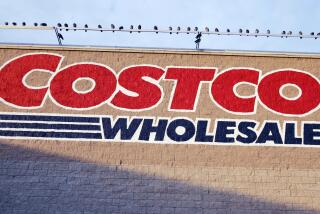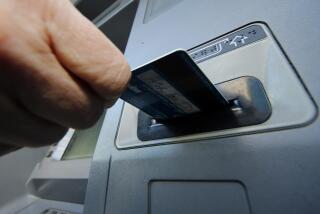Hologram-Only MasterCards Due Soon
NEW YORK — Another chapter in the fight against credit card fraud and counterfeiting begins next month as merchants stop accepting MasterCards that do not bear a hologram.
MasterCard International has notified merchants that after July 1, they should not accept MasterCards that do not include the three-dimensional image in a metallic rectangle on the front of the card. All holders of legitimate cards should have received hologram-bearing versions by July 1, the company said.
Visa International is also switching to hologram-bearing cards, and it has set a Jan. 1 target date for providing all of its customers with hologram Visa cards.
Holograms are one of several technologies that the card companies are using to make it tougher to use bogus cards, which account for millions of dollars a year in fraudulent transactions.
The banks that issue MasterCard and Visa began phasing in the new-style cards in 1983, when counterfeit card use was soaring.
Dan Brigham, a spokesman for Visa in San Francisco, said counterfeit transactions on Visa cards peaked at $39.2 million in 1984 before falling to $34.4 million last year. There are about 136 million Visa cards in circulation, Brigham said.
Russell Hogg, chairman of MasterCard, said counterfeit losses for MasterCard reached $25 million in 1983 but dropped to $15 million in 1985. MasterCard has about 120 million cards outstanding.
“With the hologram, we hope to cut the $15 million in half, maybe even more,” he said.
Hogg said that in the early 1980s, bogus versions of the old-style cards could be made on printing presses. So MasterCard decided to introduce the hologram as part of a plan for a more secure card that could cheaply replace the old cards over two to three years.
In addition to the difficulty of replicating the hologram, the image is placed over the final four numbers on the card, making it virtually impossible to alter the numbers without damaging the hologram.
The background design on the new-style cards also features ultra-fine printing that is tougher to duplicate.
Even before the demise of the old-style cards, counterfeiting losses had been declining because of other measures, including the use of new technology, increased bank scrutiny and a stepped-up program by the U.S. Secret Service to blunt the counterfeit card trade.
The companies have attempted to expand the use of point-of-sale terminals, which determine whether information printed on the front of a card matches the information coded into the magnetic strip on the back.
Since November, Visa has offered rebates to card-issuing banks that bought such terminals for use in high-risk areas, such as Miami, New York and Los Angeles, which accounted for between 70% and 80% of all its U.S. card fraud, the company said.
The card companies also are testing the next wave of card technology, the “smart card,” which features an embedded microchip that stores information and codes that may be used not only for authorizing transactions but also for security.
MasterCard has conducted a pilot program for its smart card in Columbia, Md., and West Palm Beach, Fla., and hopes to have a version of the card in national use in the next four to five years, Hogg said.
More to Read
Inside the business of entertainment
The Wide Shot brings you news, analysis and insights on everything from streaming wars to production — and what it all means for the future.
You may occasionally receive promotional content from the Los Angeles Times.










